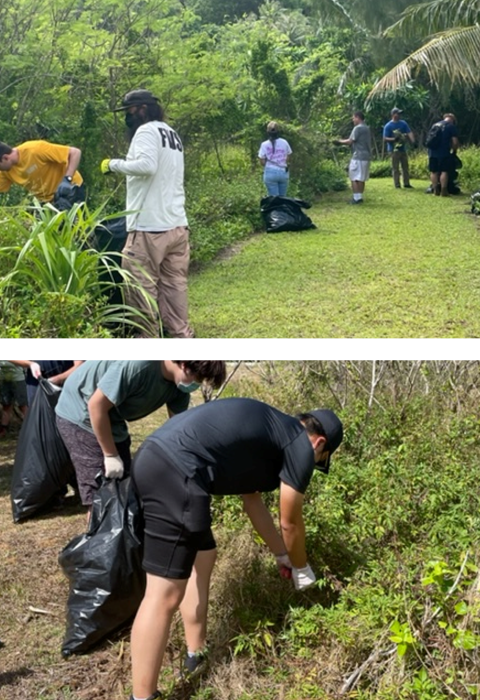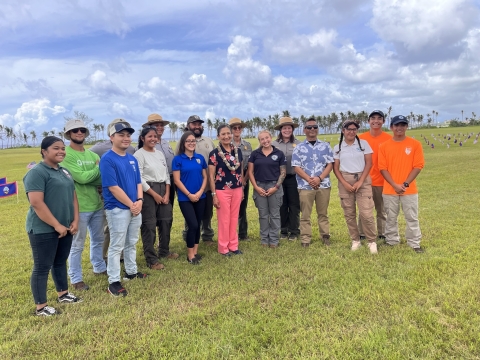The Guam National Wildlife Refuge partnered with Kupu's Conservation Leadership Development Program to support habitat restoration through invasive plant species removal. Through the Kupu program, US Fish & Wildlife Service (the Service) seeks to fill a much-needed position to address the invasive vines that grew extensively after Typhoon Mawar last summer. This position is open to individuals aged 18-30 years old. In addition, the selected candidate will have opportunities to work on other projects on the Refuge, such as removing other invasive species invasive species
An invasive species is any plant or animal that has spread or been introduced into a new area where they are, or could, cause harm to the environment, economy, or human, animal, or plant health. Their unwelcome presence can destroy ecosystems and cost millions of dollars.
Learn more about invasive species (feral pigs and/or deer) and assisting with interpretive tours and programs.
Position highlights:
- Paid 6-month full-time position
- Eligible for individuals between 18-30 years old
- Valuable, hands-on work experience
- Must be able to physically work outside for hours at a time
Interested individuals may apply here. Please indicate "Guam National Wildlife Refuge" as your host site on the application. Lodging and transportation are not provided. Selected candidate must have reliable mode of transportation. The position is open until filled.
Following the typhoon, holes in the forest canopy enabled invasive vines to grow abundantly along public walking trails. Forest structure structure
Something temporarily or permanently constructed, built, or placed; and constructed of natural or manufactured parts including, but not limited to, a building, shed, cabin, porch, bridge, walkway, stair steps, sign, landing, platform, dock, rack, fence, telecommunication device, antennae, fish cleaning table, satellite dish/mount, or well head.
Learn more about structure and species composition can be modified by invasive vines. Invasive vines also serve as vectors and hosts for introduced pests and diseases. Under the Service mission, habitat restoration is a critical part of our work to protect listed ESA-listed* species, such as the Mariana fruit bat and Mariana Eight-spot butterfly. The Service staff at the Guam National Wildlife Refuge look forward to working with the selected individual to support this critical mission to care for our island's native plant species and the wildlife that depend on them at Ritidian.
*ESA-listed species include threatened and/or endangered species under the Endangered Species Act.



